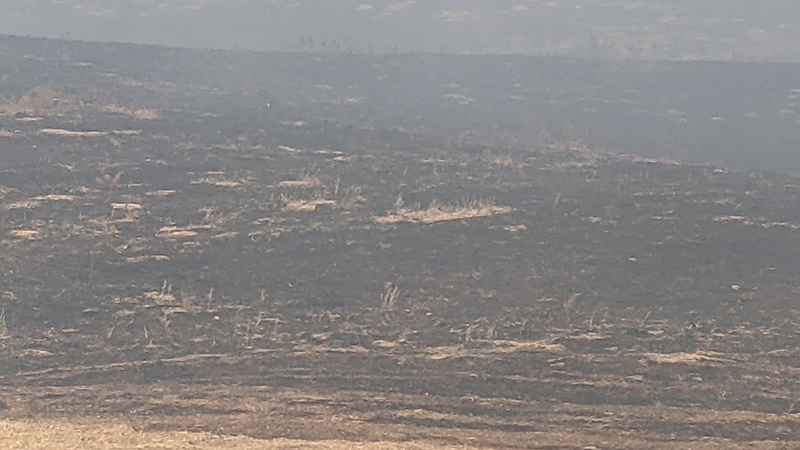Posted: 4/4/2022
University burns patch of Sandhills grassland in test of fire and grazing
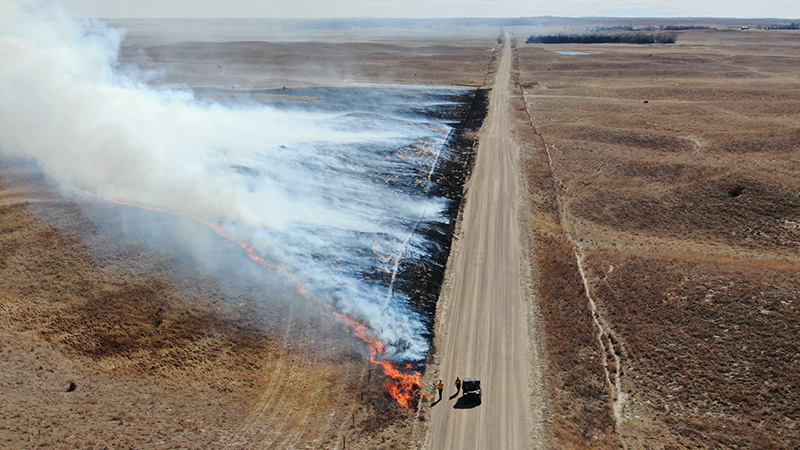
For the first time in more than 10 years, the university set fire to grassland at the Barta Brothers Ranch near Rose, Neb., and burned 150 acres on March 18, 2022. The burn was part of the collaborative adaptive management project that the university’s Center for Resilience in Agricultural Working Landscapes and its Center for Grassland Studies have led at the ranch since 2020.
"We were very excited to implement an experiment in that process," said Dan Uden, CRAWL scientist and natural resources professor. "I think I was most excited about it because the experiments are stakeholder-driven. We have a group of stakeholders who basically design these experiments, and we help them with that and then we carry them out and we monitor the results."
Local ranchers, The Nature Conservancy, the Nebraska Game and Parks Commission, and the Nebraska Forest Service helped carry out the burn.
Once the burnt pasture greens up, a local rancher will release cattle into it and nearby pastures to graze. Professors and students will monitor cattle movement, soil response, vegetation response, erosion, carbon, bird activity, cattle weight gain, and many other things, Craig Allen, the director of CRAWL said.
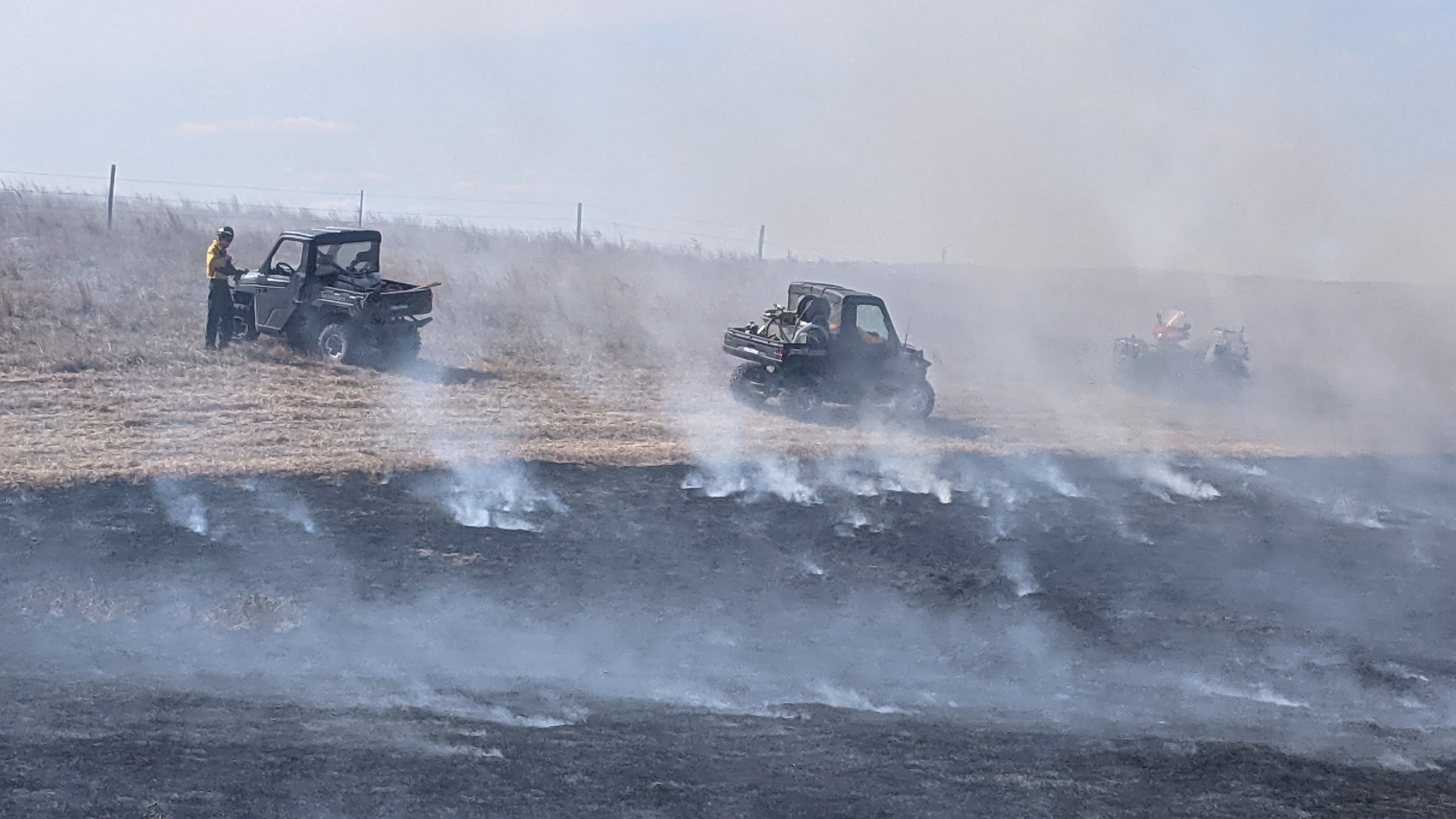
Allen explained why the centers are layering experiments into managing the ranch.
"A key component of adaptive management is that there is some uncertainty about how management might affect the land you're trying to manage, " he said. "If there wasn’t any uncertainty in the response, we would just do the best management practice. If there is uncertainty, you have to see which one is better, and the best way to do that is experimentally. Adaptive management is designed to allow one to sort of combine experiments with normal management, so learning by doing. "
Mitchell Stephenson, the interim director of the university’s Panhandle Research & Extension Center in Scottsbluff, said the university had not commonly used prescribed burns on its land in the Sandhills but knew that burning could be an effective tool in managing red cedars and invasive plants and improving plant diversity.
He also said regrowth in a burnt pasture is highly nutritious, possibly helping with livestock weight gain, and research on patch burn grazing from other states suggests cattle favor such grass.
"Typically, what happens is that the cow will end up staying on those areas much more than the other areas that aren’t burned,” he said.
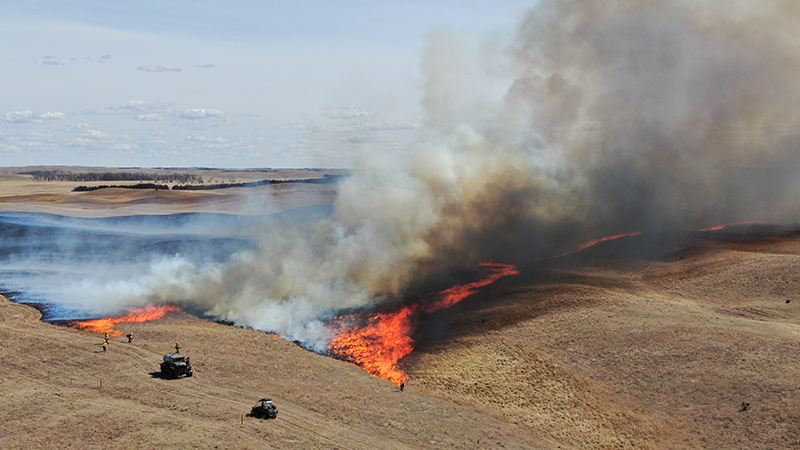
The team managing the 6,000-acre Barta ranch will rotate burning among four pastures of about 150 acres each, burning one pasture a year.
"You burn it and then cattle will graze that fairly heavy, and then the other places, they don't graze quite as heavily, so that builds up the biomass so that you can burn those areas that they didn’t graze the following year, " Stephenson said. "As time progresses, the place you did burn, that they did graze heavily, will recover, and they'll move on to the other place that was burned. And so, it kind of moves those cattle around a little bit more. "
Gwendwr Meredith, a social-ecological rangeland scientist at the university, said she saw the burn as an important action for the university to take.
"We preach all the time to put fire on the landscape, but here's this university-owned property where we're not doing that, " she said. "So, it's a really good opportunity to learn about the effects of fire, but it's also a good demonstration. "
She said some neighbors to the ranch watched from the road or drove by, looking.
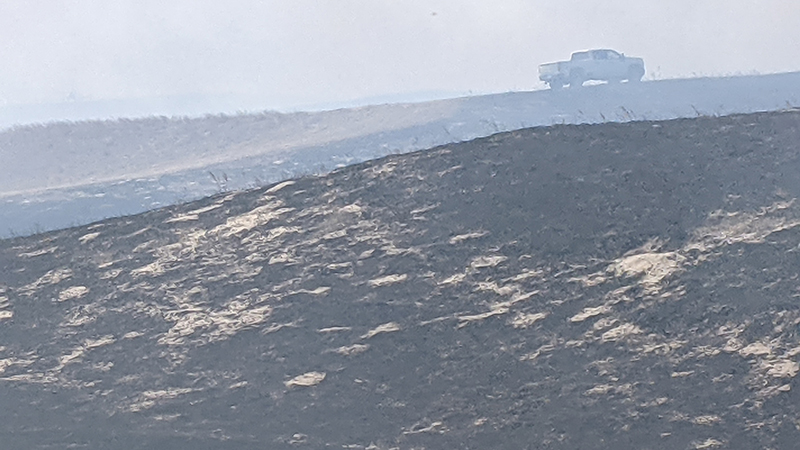
About 30 people took part in the burn, starting at the southeast corner of the pasture and finishing at the northwest corner. One team worked its way north and then west while the other team worked west and then north.
Stephenson had mowed a path about 30 feet wide around the pasture months ahead of time, and the teams sprayed water onto this path to form a "wet line" about 2- to 3-feet wide. The line helped stop sparks and drifting debris from igniting grass outside the burn area.
The teams had a lead truck with a large water tank that refilled the water tanks of the ATVs and UTVs the teams sprayed water from.
Team members walking behind the drivers had rakes and "flappers, " tools that look similar to a snow shovel but with a large, rubber flap used to smother fires. Some team members carried drip torches to ignite fires along the wet line, but local ranchers also had a huge tanker truck nicknamed "Megatron, " which could lay down wet line with a water hose on one side and ignite fires with drip torches on the other.
Once, when a spot fire started on the wrong side of the ignition point, the Megatron drivers quickly drove through a barbed wire fence to get to the fire and put it out.
"They just mowed down the fence and I saw the truck drive through fire, " Meredith said. "It was an epic vehicle, just kind of emerging over the dune in a cloud of smoke driving right through the fire to get there. "
A challenge the team saw in burning pastureland was cow patties that caught fire.
"The wind was pushing flaming cow patties out of the burn unit, and it caught a little bit of the neighboring area on fire, " Meredith said.
Team members quickly put out the escaped fires and used their rakes to toss cow patties farther into the burned area, broke up patties by driving over them and dowsed them with water to extinguish them.
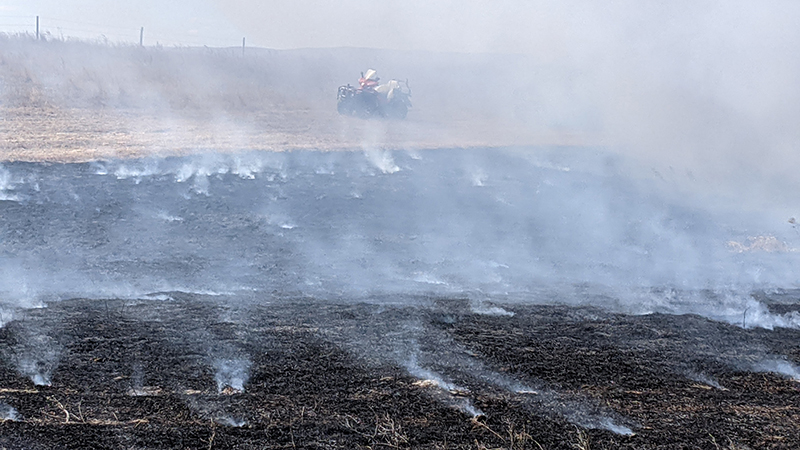
Uden had written a journal article about use of bison and cow chips as fuel in the 1800s on the Great Plains, so he knew about their potential to burn for hours and how that could complicate a burn. Although he had worked with fire before, he said this was his first time setting fire in an area grazed the year before.
"The cow patties was a unique element where we had these smoldering cow pies that we had to keep an eye on, " Uden said.
He said walkie-talkies proved helpful in maintaining constant communication between the teams.
"You're both setting fire, so it's very important to be coordinated when you're doing that, " he said. "I learned a lot about that communication between groups within a burn. "
Uden took on many roles in the burn, lighting the fire with torches, setting down the wet line with a fire hose, raking debris farther into the fire and extinguishing remaining burning patches.
"The great thing about this burn was that we were able to perform different roles, to do different jobs, if we liked,” he said. “That was a big benefit, especially for those of us with moderate or low experience. We could try different jobs. "
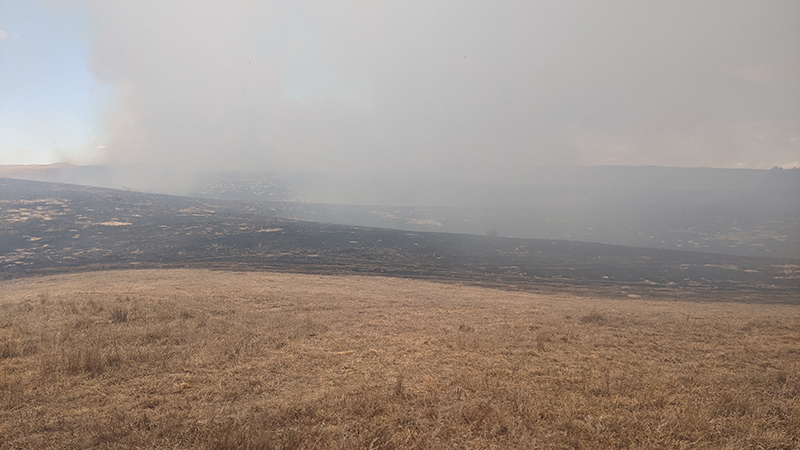
Meredith had taken part in only a two-acre teaching burn before driving a UTV in the Barta burn, patrolling for spot fires and laying down the wet line while the main engine went after more water. She ended up working from 11 a.m. to 4 p.m. and arrived home about 10:30 p.m.
"I was pretty shocked at the difference between the small teaching burn that was two acres versus a big one that was 150 acres, " she said. "It seemed like, logistically, this was just so, so much more involved, as it should be. "
Stephenson said he was similarly inexperienced but knew of 2,000-acre burns that have been carried out near North Platte.
He credited The Nature Conservancy, the Nebraska Forest Service, the Game and Parks Commission and ranchers like Adam Switzer, who brought the Megatron truck, with making the burn successful.
"What I learned is there are excellent resources out there, people that are extremely knowledgeable, " Stephenson said. "Planning and finding those folks to help you plan if you are not familiar with fire are pretty critical to making a fire a success. I kind of see it as neighbors helping neighbors or groups helping groups and finding those people that are really knowledgeable to help walk you through it is key. "
Uden suggested ranchers interested in burning on their land touch base with prescribed burn associations in their area.
"It's kind of a collaborative situation where you help others on their land and they help you on yours, " he said.
Often, prescribed burns foster a team mentality in participants, he said, and he saw that at the Barta burn.
"The thing I was most impressed about was just the collaborative spirit and how everyone worked together and helped one another out and how those with less experience were given an opportunity to really learn and try out all sorts of different jobs throughout the day, " he said.
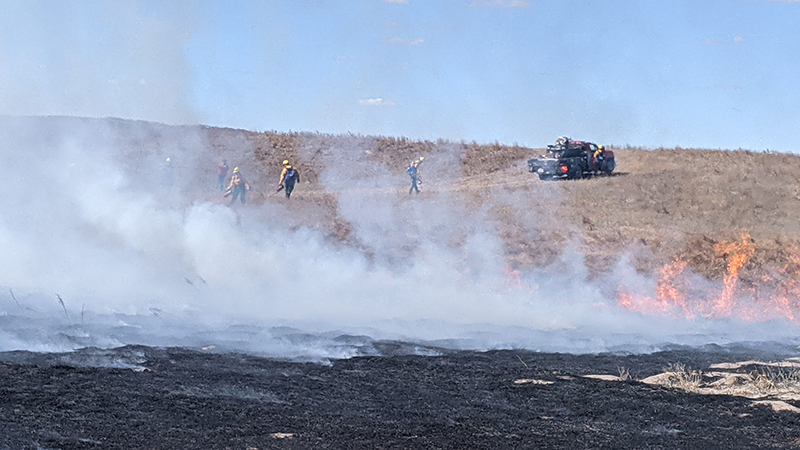
Meredith said the wind, low humidity and spot fires made the day stressful for her, but the burn still succeeded and she now feels better prepared for next year’s burn.
"At the end of the day, I guess what's reassuring is we had planned that out and had the resources to catch them all in time and so it wasn't an issue, " she said. "If you have the resources and the people, it will work out. "
Uden said he was anticipating the research that will come through prescribed burns at the ranch.
"What we're doing now is we're going to be watching that area for decades to look at the immediate, but also long-term, effects that this treatment has had, " he said. "I think that's really exciting to be able to track the legacy of this event and to learn from it. "
— Ronica Stromberg, Program Coordinator at CRAWL
